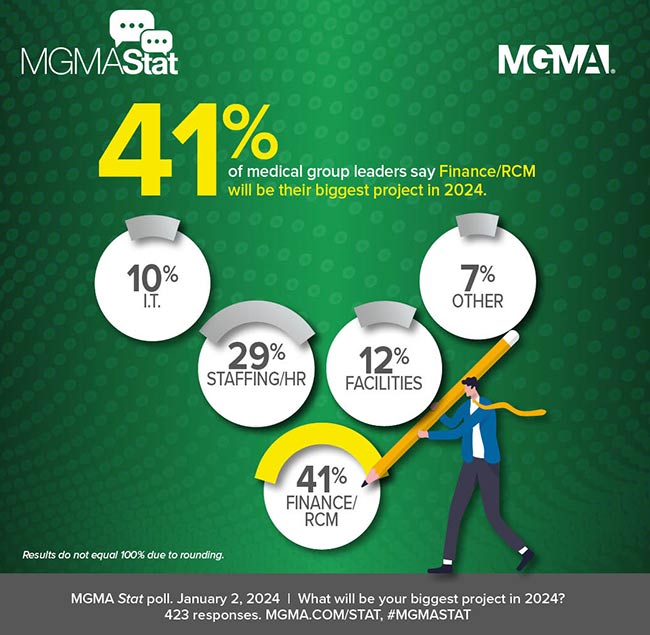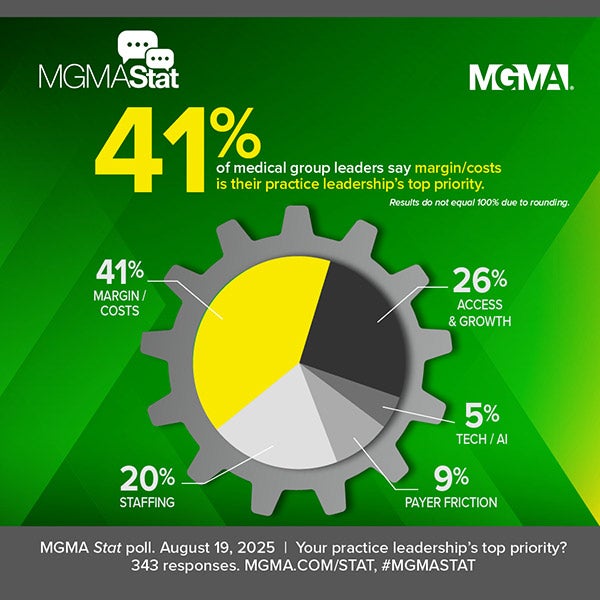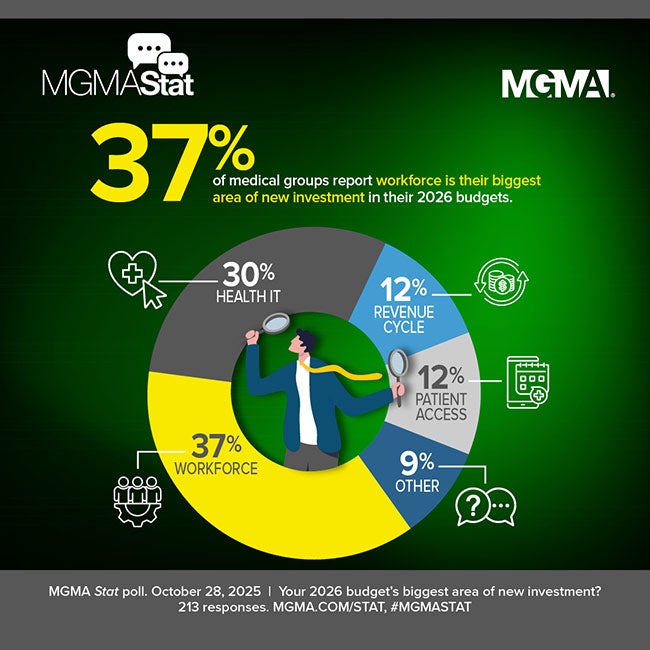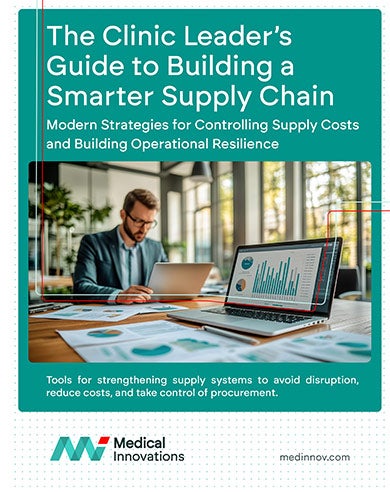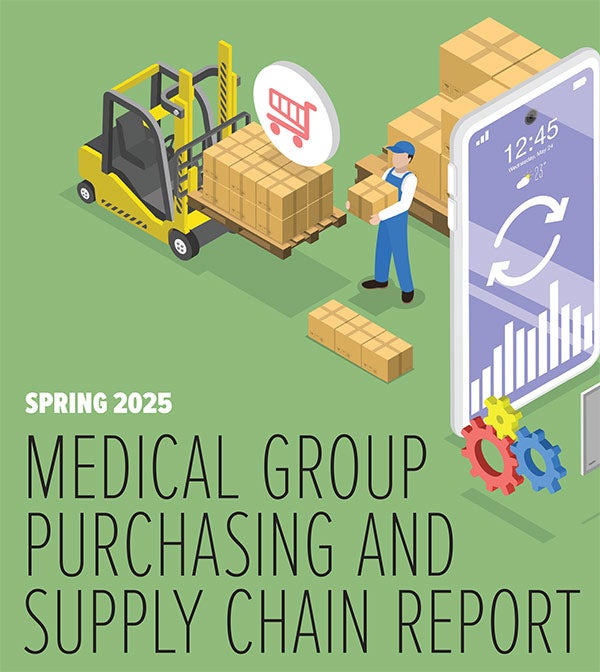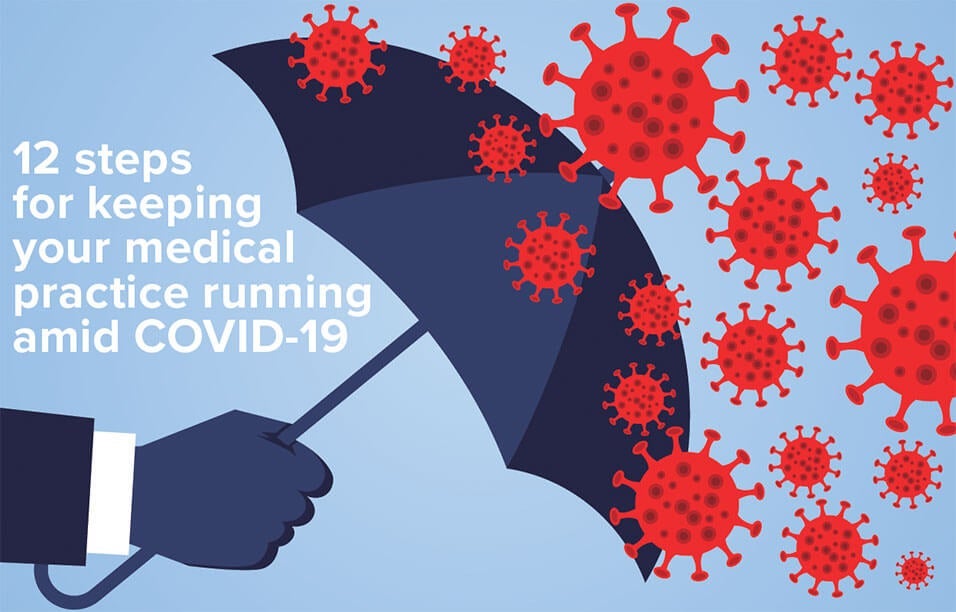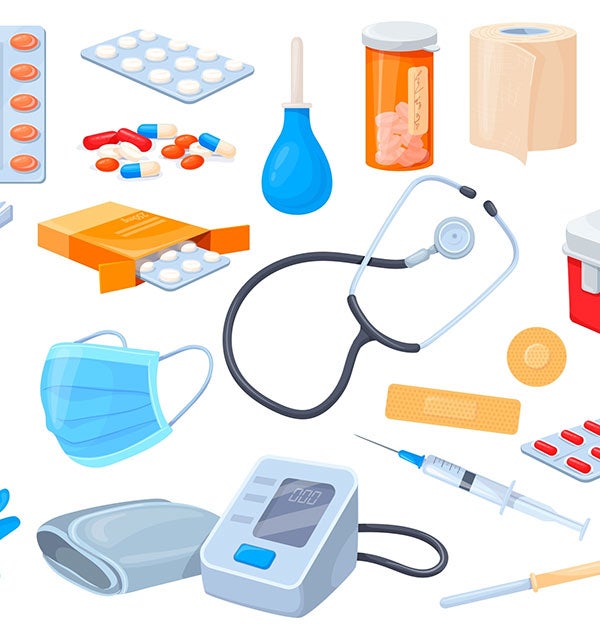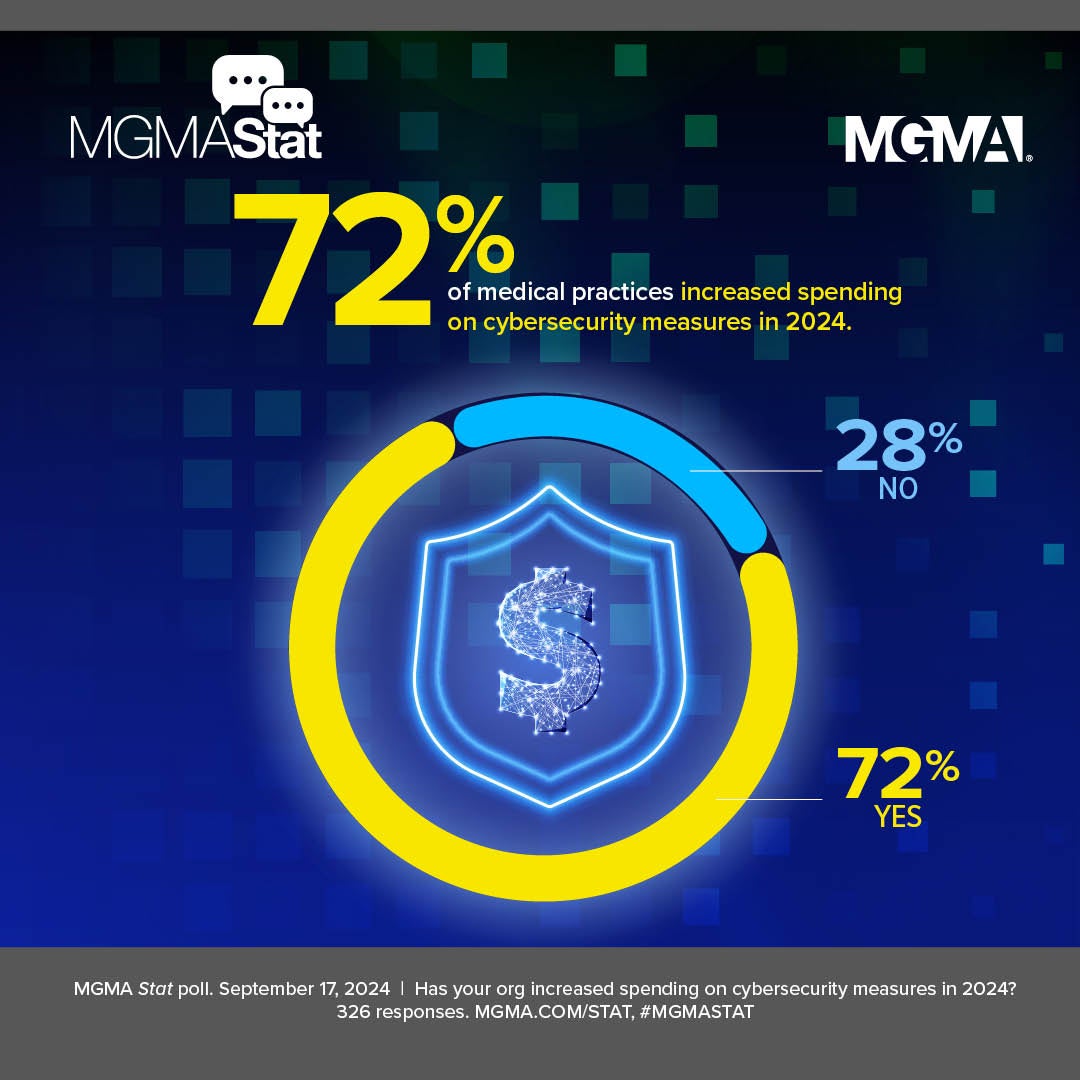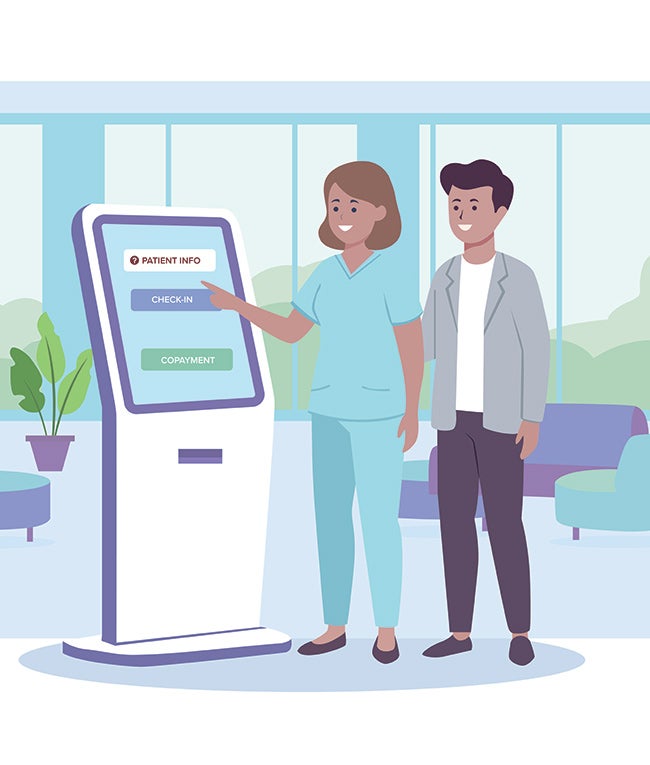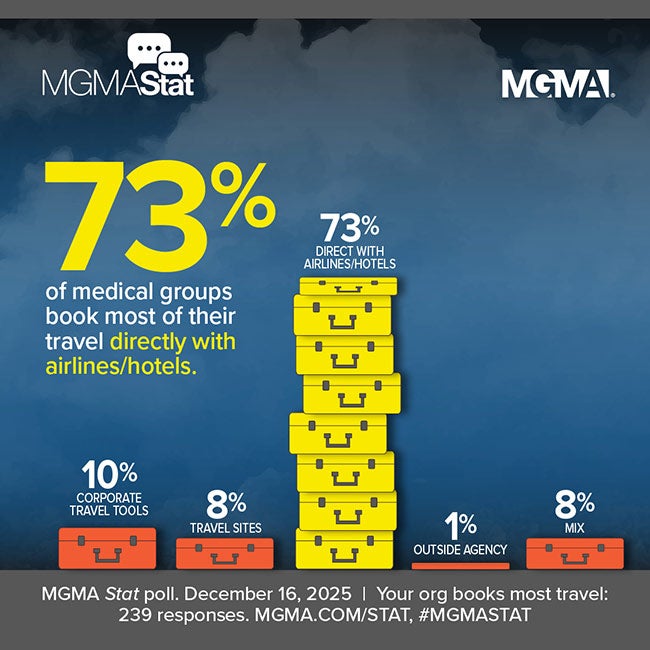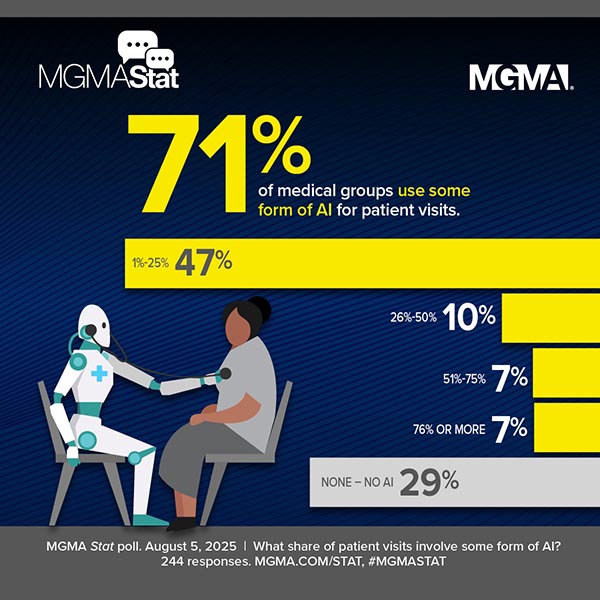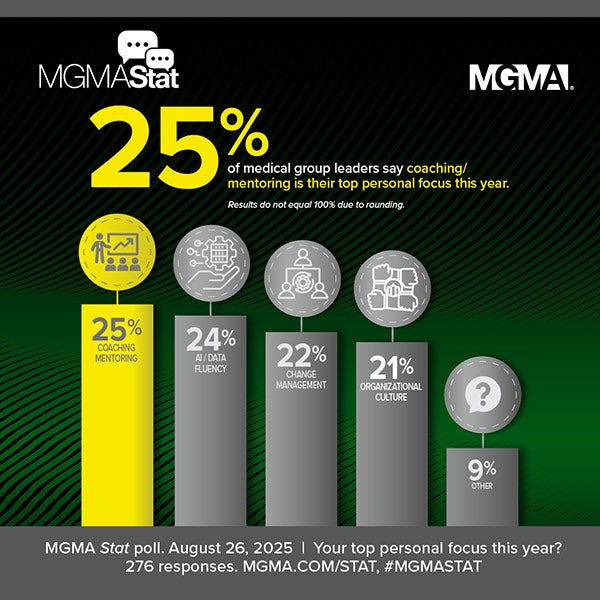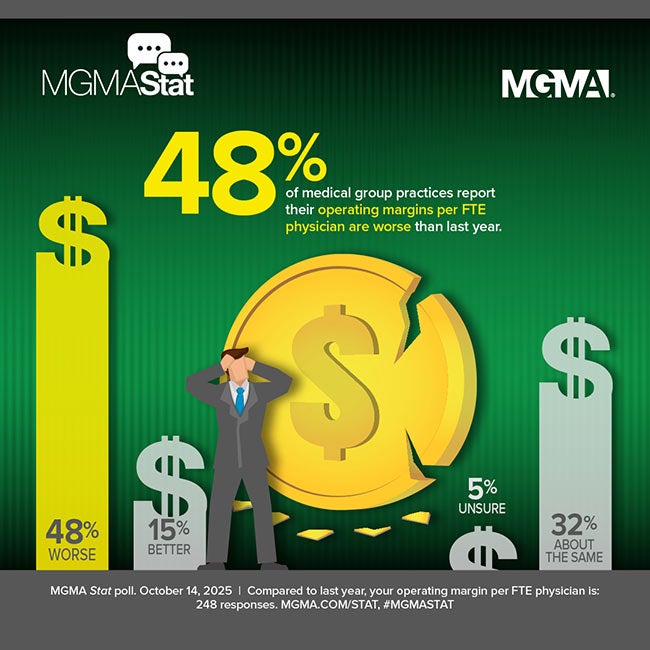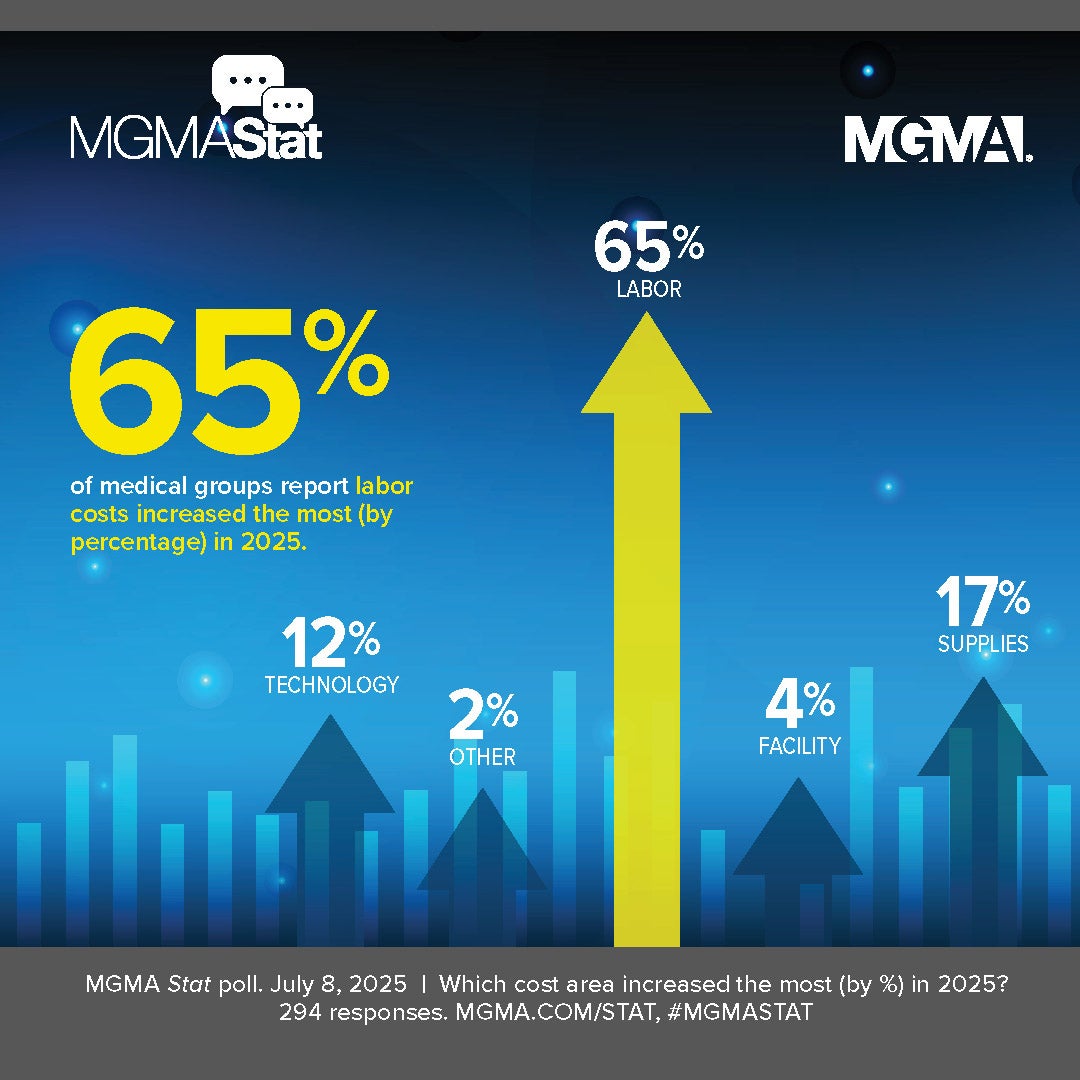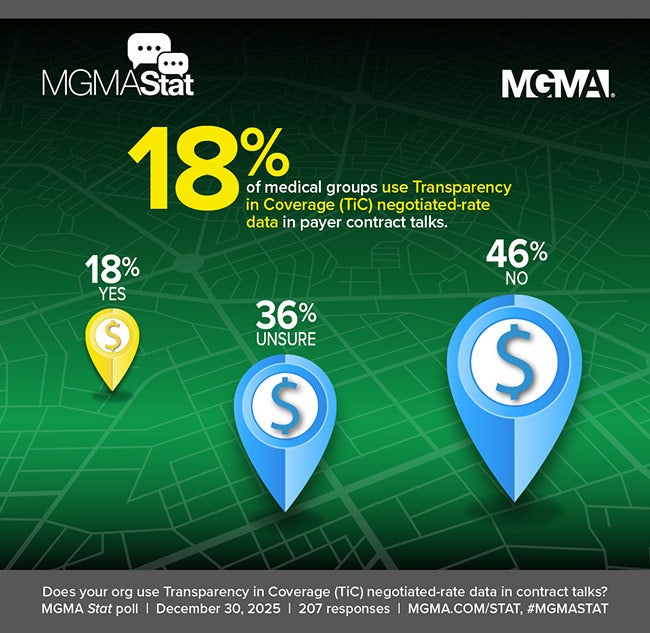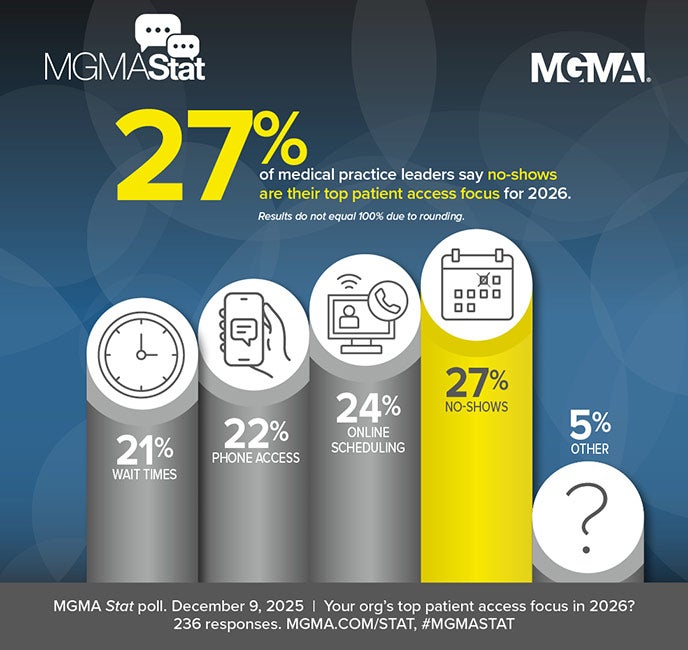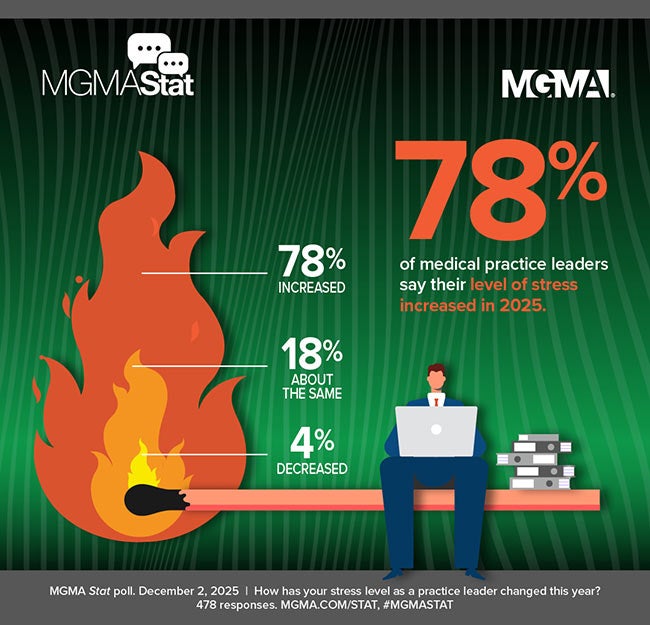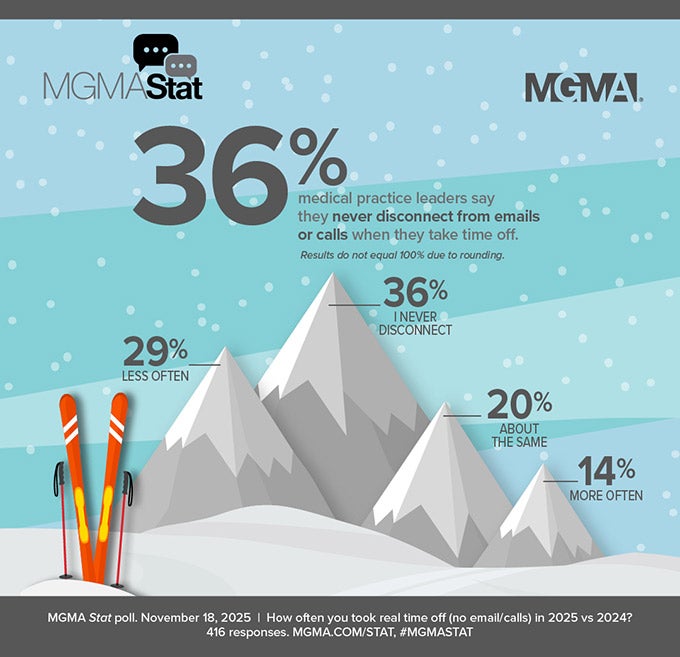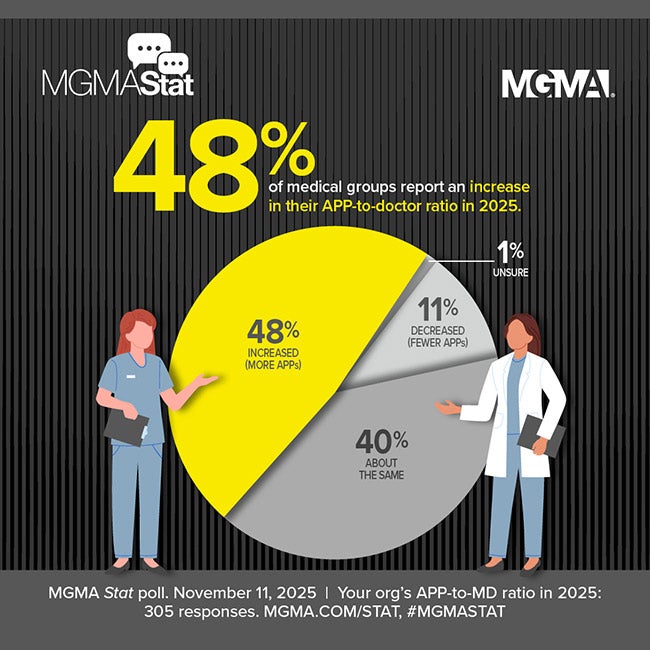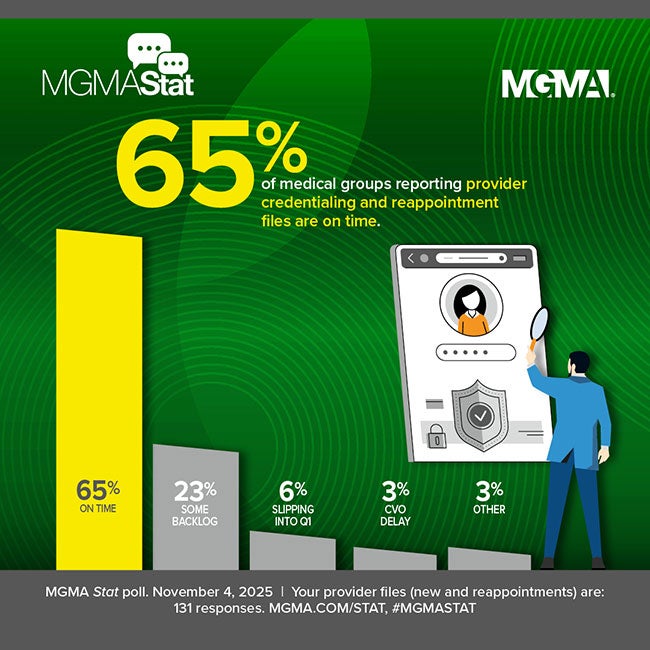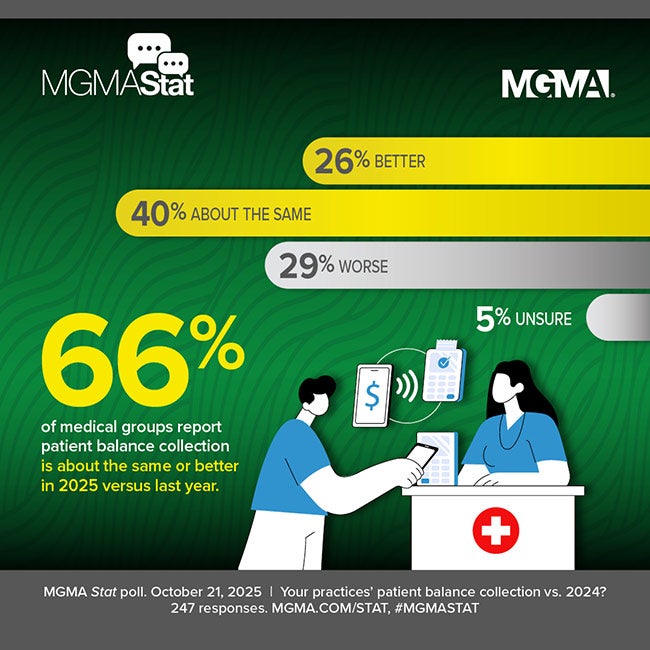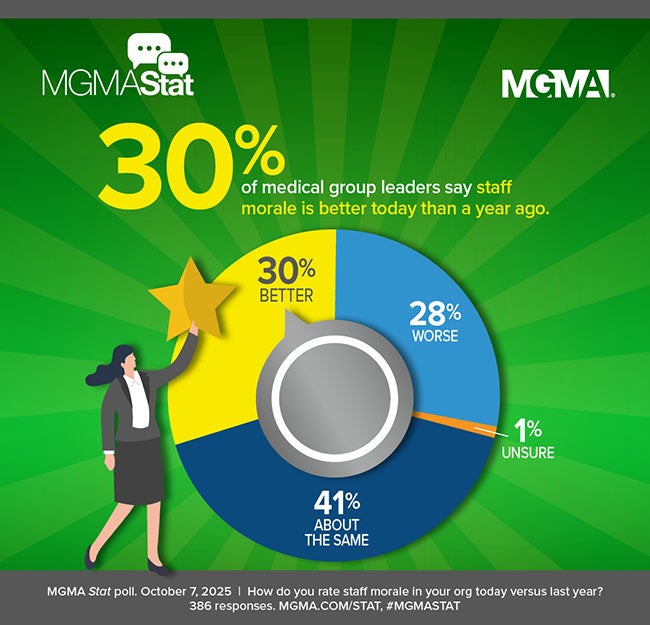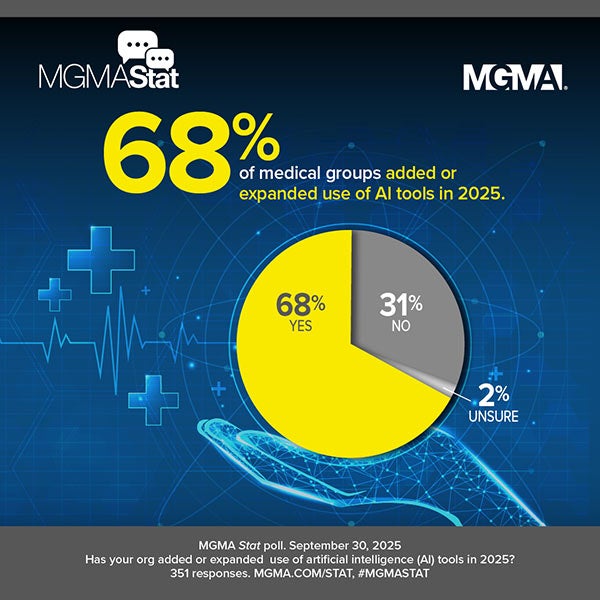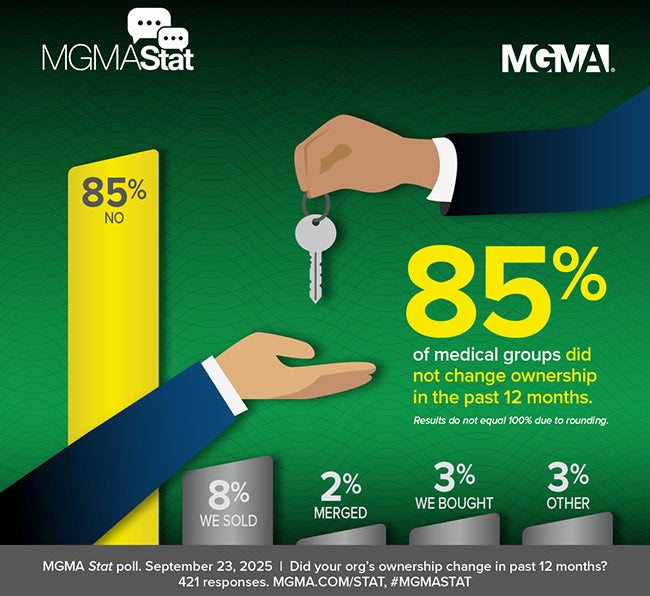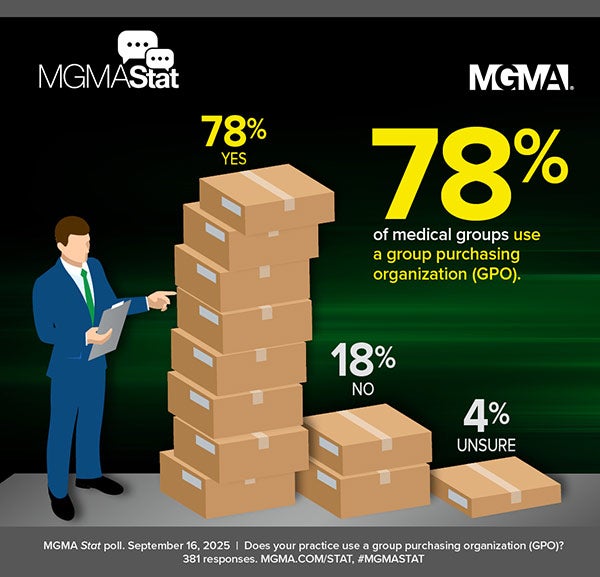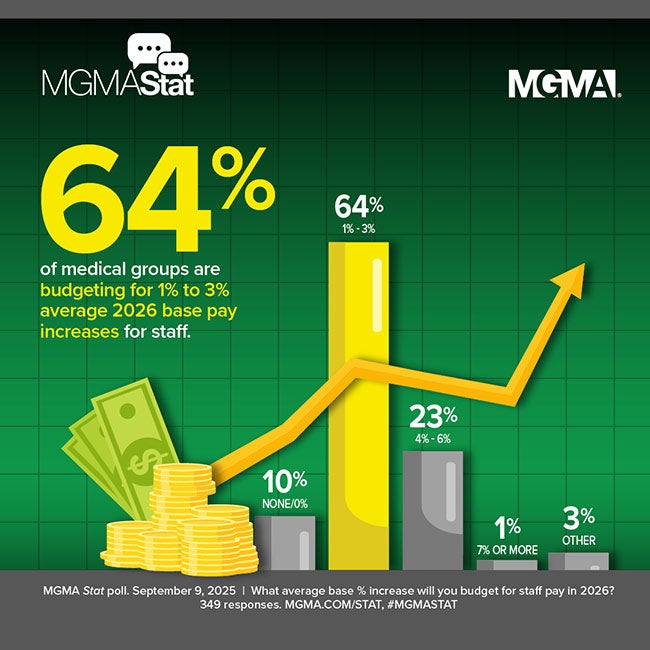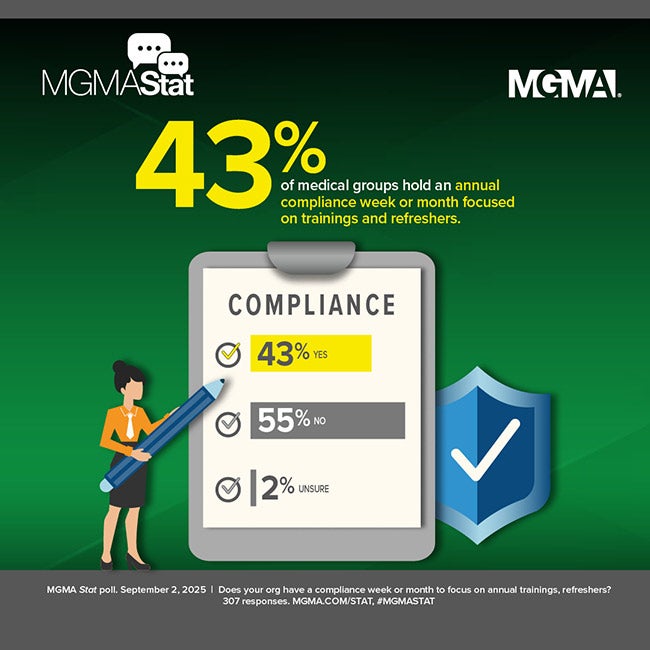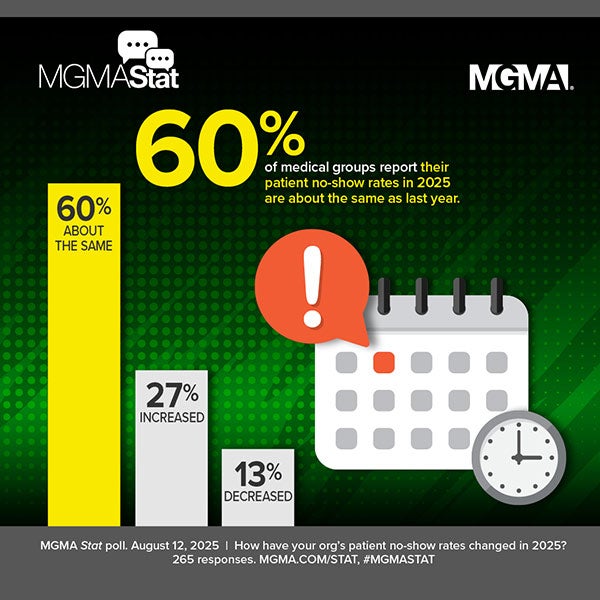While pay for healthcare workers often is the biggest chunk of expenses for medical groups, overall budgets are feeling the squeeze from other types of costs that are on the rise.
 A July 5, 2022, MGMA Stat poll asked healthcare leaders which areas of non-labor expenses have grown the most in 2022. Based on 343 applicable responses, drug supply (36%) was the top response, followed by:
A July 5, 2022, MGMA Stat poll asked healthcare leaders which areas of non-labor expenses have grown the most in 2022. Based on 343 applicable responses, drug supply (36%) was the top response, followed by:
- Information technology (24%)
- Facilities (17%)
- Administrative supplies (15%)
- Other (9%).
While staffing was the top concern of healthcare leaders heading into this year, soaring inflation and its effects on consumer prices are capturing more attention: A recent Syntellis and Wakefield Research survey (PDF) found that more than half (52%) of healthcare executives pointed to inflation as an issue that keeps them up at night, and about three-quarters of those surveyed pointed to cost containment as a high priority.
That same survey report — detailed in HealthLeaders — presented six key strategies for containing costs:
- Increasing workforce productivity optimization
- Improving processes
- Reducing overhead
- Leveraging economies of scale with other hospitals/groups
- Seeking lower-cost supplies
- Eliminating unprofitable services.
As reported by Fierce Healthcare last month, a recent online survey of healthcare chief financial officers and vice presidents of revenue cycle from large health systems and physician groups found that increasing costs were the top concern for the financial health of organizations, ahead of the risk of a recession and looming cuts to reimbursement from commercial payers and the Centers for Medicare & Medicaid Services (CMS).
Here's what MGMA Stat poll respondents had to say about their most-pressing issues among rising non-labor expenses:
Drug supply
In 2021, a report by MGMA BestPrice cautioned healthcare leaders about disruption of product availability from pharmaceutical manufacturers and price increases as global supply chains remained focused on COVID-19 vaccine production, with other products put on rolling production delays. “The breadth of supply chain issues leaves no major manufacturer untouched,” the report noted.
Halfway through 2022, that prediction has proved prescient, with several issues around drug supply availability and cost reported by medical group practice leaders in this week’s poll. Among the top issues:
- Specialty medicine costs “have risen tremendously,” one practice leader told MGMA, all while payments have decreased. Areas such as in-house infusion and injection medications for rheumatology rose, as well as compounding immunotherapy serums. Specialties such as oncology that use higher volumes of medication reported cost increases and supply disruptions. “It has been hard to keep performing some vital procedures and medication to our patients,” another practice leader said. “A lot of our drugs and supplies we use for outpatient surgeries are either on back order or now cost [25%] more,” another MGMA member said.
- New or increasing fees. In addition to base pricing going up, multiple practice leaders said that new or rising delivery charges took a bigger chunk out of the budget than in years past, as several entities sought to pass along added costs associated with global supply chain disruption.
Information technology
Just as car makers and other segments of the economy faced shortages of microchips and other computer components, healthcare providers were also hit by the supply disruptions to hardware for their IT systems, often postponing or delaying planned upgrades as a result of item unavailability or price gouging.
In other instances, practices that pivoted to a significant amount of remote working reported “dramatically increased” expenses to improve cybersecurity efforts outside traditional brick-and-mortar facilities.
Other increased IT expenses included higher costs for planned EHR conversions and training for providers and staff, though many respondents noted these were expected to be one-time expenses. Some medical groups opted to divert funds previously allocated for other areas (e.g., marketing) to continue with cybersecurity and system upgrades.
Facilities
While several businesses enjoyed a shift in the commercial real estate market when many employees worked from home during the height of the COVID-19 pandemic, several MGMA Stat poll respondents said that their organizations did not fare as well with property managers and owners.
“Our facility costs all rose dramatically because of inflation-tied lease agreements,” one practice leader said. Cities and regions that have seen a population boom during the pandemic (e.g., Austin, Texas) have seen a combination of soaring rents and energy/utility costs.
Other practice leaders noted they are facing higher rates for maintenance work in their facilities, and that construction work was heavily impacted by rising costs for supplies and materials from the beginning of the pandemic — especially wood products.
Administrative supplies
Medical practices still use lots of ink and paper, along with dozens (if not hundreds) of everyday office supplies, all of which saw price increases as vendors adjusted monthly service fees to account for inflation.
For some of the most-sought-after supplies, many healthcare leaders were frequently told they were unavailable or severely back-ordered. This led many practice leaders to invest more time into searching for and vetting alternative vendors, and ultimately paying a premium for those new sources.
Another expense of supply chain disruption has been the need to run inventory within clinics more often: Managing the risk of shortages often makes the difference in being able to provide services and drive revenue from those services.
Other
Nearly one respondent in 10 said they faced surging expenses for other medical supplies, raising the cost of doing business: Gloves, syringes, bandages, disinfectant wipes, masks and more were cited among the most-impactful price hikes. “The impact is a financial strain on budgets and possible improvements next year,” one practice leader told MGMA.
Other practice leaders echoed the results of a June 28, 2022, MGMA Stat poll, citing malpractice premium expenses being on the rise since 2020. Among the 62% of medical practices that reported increased malpractice premium expenses in that poll, the average increase since 2020 was 14.3%.
Other healthcare leaders noted that some combination of all these non-labor expenses rising has put their bottom line under significant strain. “It is getting harder to pay the bills or even break even,” one respondent noted.
JOIN MGMA STAT
Our ability at MGMA to provide great resources, education and advocacy depends on a strong feedback loop with healthcare leaders. Sign up by texting “STAT” to 33550 or visit mgma.com/stat and make your voice heard in our weekly polls sent via text message.
Do you have any best practices or success stories to share on this topic? Please let us know by emailing us at connection@mgma.com.



